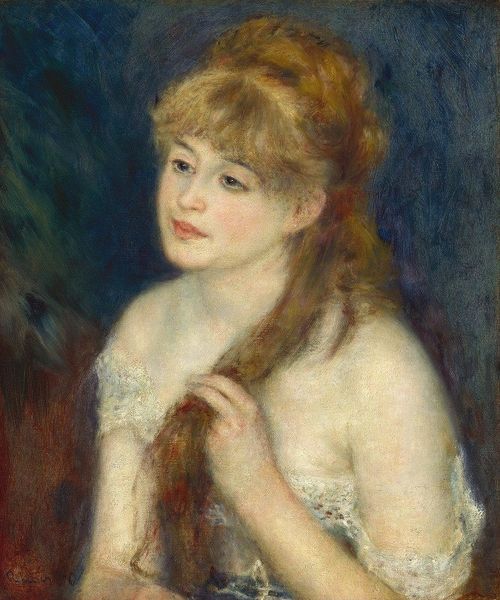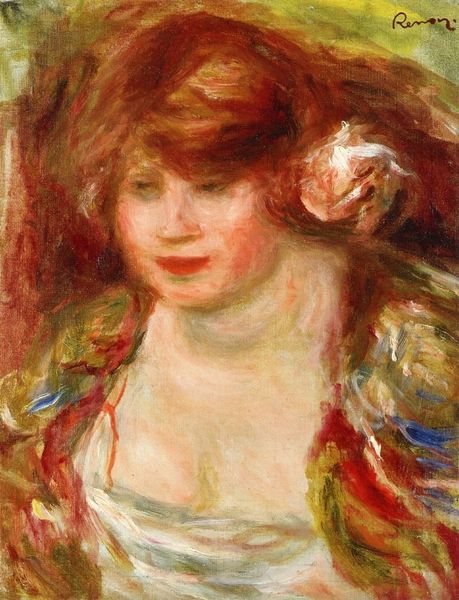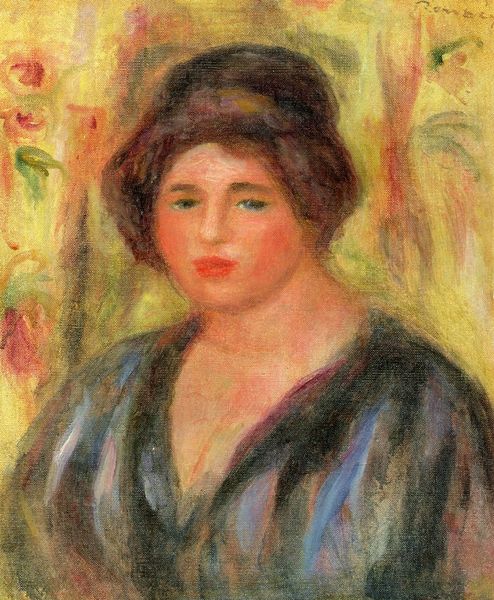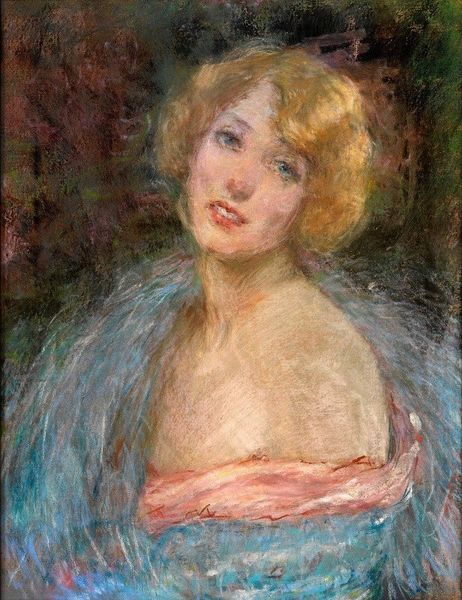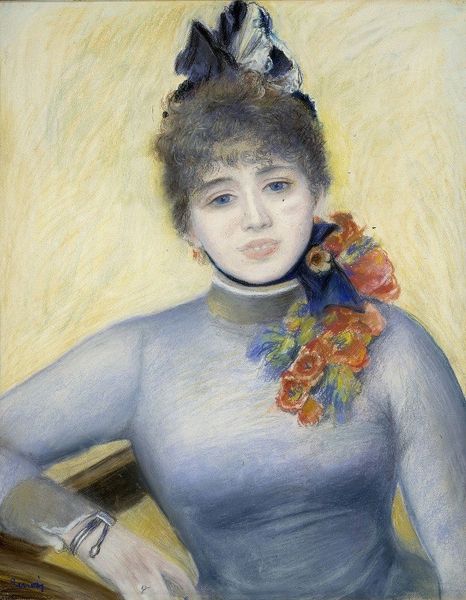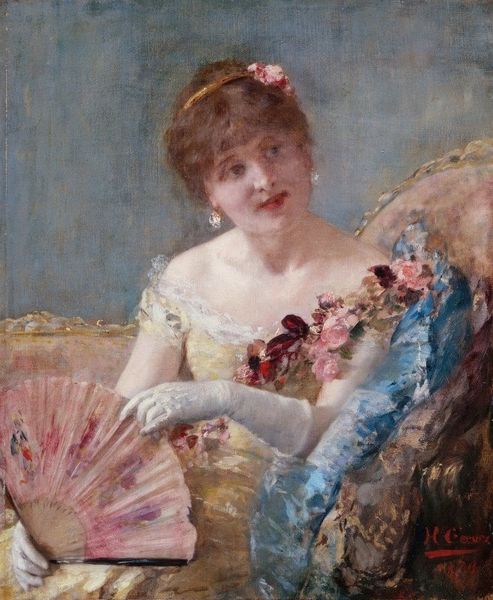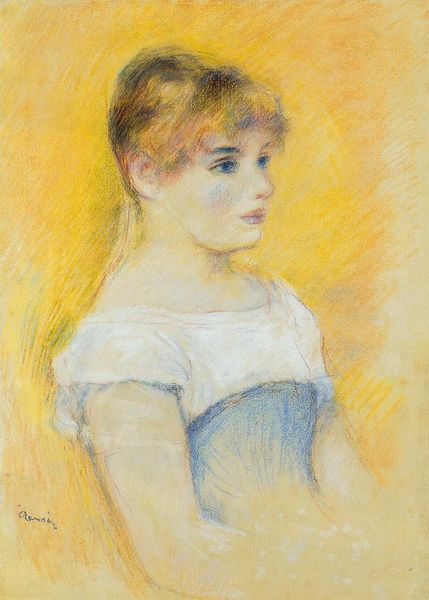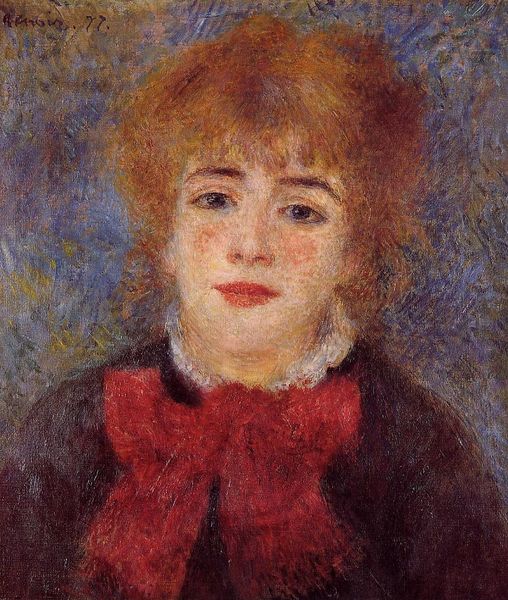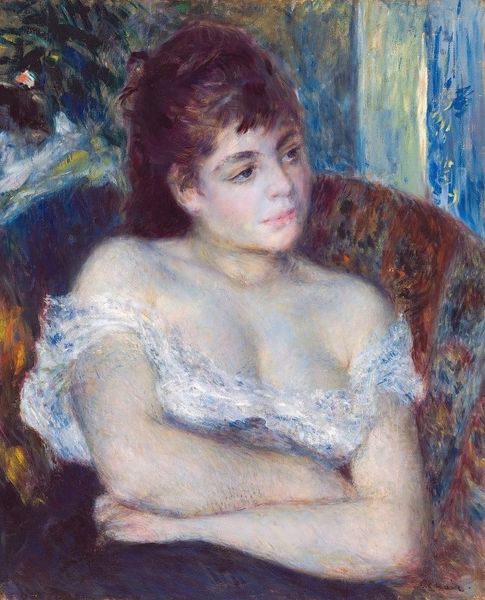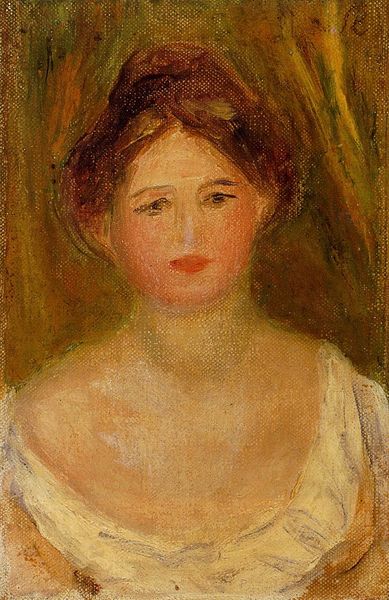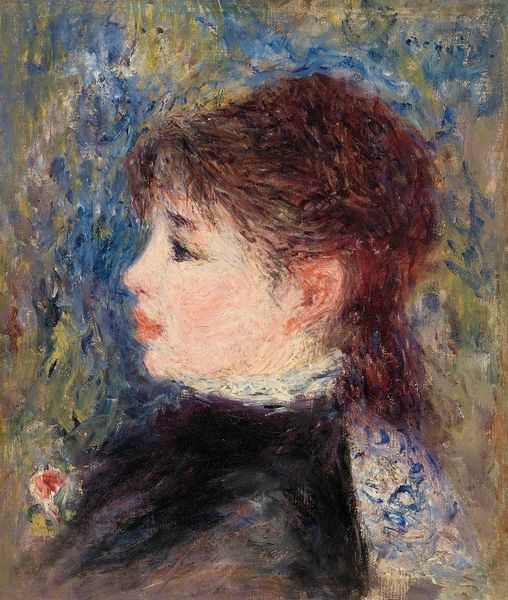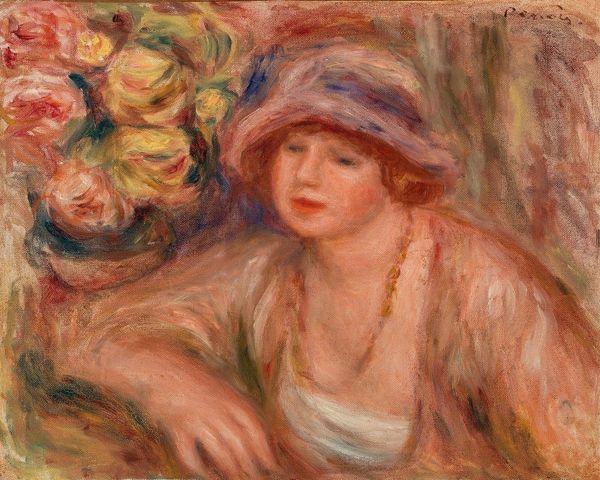
Dimensions: 46 x 56 cm
Copyright: Public domain
Curator: Here we have Pierre-Auguste Renoir’s "Jeanne Samary in a Low Necked Dress" from 1877, currently housed in the Pushkin Museum in Moscow. Renoir rendered this artwork with oil paint. Editor: The immediacy of the work strikes me first— the textures appear hastily yet deliberately placed. There’s an unfinished quality to it, perhaps. Curator: The loose brushstrokes certainly contribute to that sense of spontaneity, emblematic of Impressionism. Observe how Renoir employs color; the juxtaposition of the green dress against the warm, almost salmon-colored background creates visual tension and enhances the sitter's pale complexion. Editor: Considering the societal pressures of the time, and particularly within artistic circles, it's also worth discussing the choice of materials. What dictated his preference for oil paints, a more ‘respectable’ medium compared to, say, pastels which were sometimes seen as less permanent or serious. And why the large scale? Surely, those factors influenced audience perceptions, as well. Curator: Undeniably, the materiality and scale amplify its artistic statement. Let’s consider the semiotic implications. The soft blurring of lines, a technique quite distinct from academic precision, speaks to the transient nature of beauty itself, or perhaps the fleeting moment he sought to capture. Her pose too… pensive and relaxed, defying the stricter conventions of portraiture that preceded this period. Editor: Absolutely. And further to that, the creation process must have required resources beyond what less-established artists would possess—time, a studio, a model, plus access to these expensive materials. His art-making activities become tied directly into economic forces. Even the colors themselves represent industry innovation – where did those vibrant shades of green originate from? Curator: A crucial point. Examining the synthesis of these factors lets us deconstruct not only the formal composition, but the social tapestry that enabled and informed the painting. Its aesthetics challenge the rigidness found in prior conventions, paving avenues to subject interpretations, especially woman depiction. Editor: Indeed. It compels us to appreciate its context as an artistic innovation – or perhaps, more precisely, a conscious evolution of making at the time. The material choices in relation to subject depiction – a story unto themselves.
Comments
No comments
Be the first to comment and join the conversation on the ultimate creative platform.
